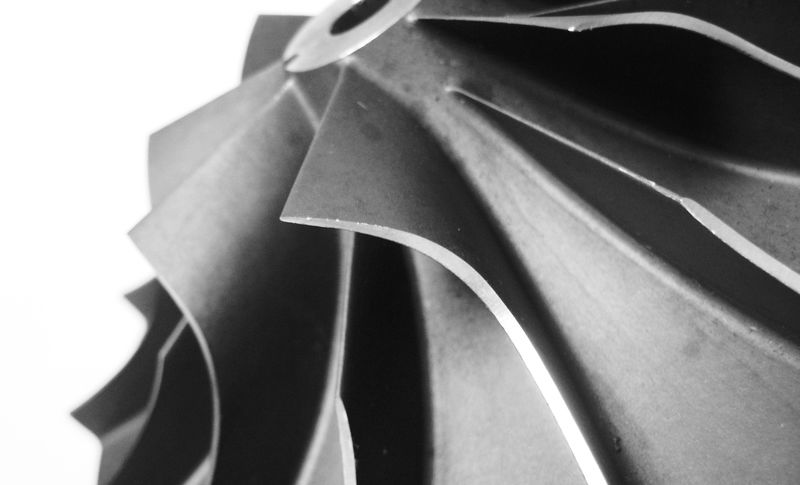How do Vortron Blowers Differ from the Competition?


Example of CFD Output – one of many graphic views available to evaluate performance within the flow path of the blower impeller. With CFD, the designer can analyze the aerodynamic performance of the entire compressor stage in great detail. Parameters such as “bulk efficiency” can be predicted to a very high degree of accuracy.

The Result of a J-1723 Compressor Test is a Certified Compressor Map. Complete performance of the Z40e is displayed on this compressor map, including pressure rise at various speeds, flow range, and operating efficiency. As with all Vortron compressor maps, the data was obtained from a test conducted in accordance with SAE Standard J-1723. Per the map, the Z40e easily attains 1300 SCFM flow at 100” H2O (1.25 pressure ratio) with an efficiency of 80%. This operating point is met with a 25HP motor.
How Does Vortron Differ from the Competition?
Vortron has benefited from over 14 years of industry leading experience in the design, test, and manufacture of high-performance centrifugal compressor products. Many of these products found their roots in automotive superchargers, which are used in high performance street and racing engines. Today, Vortron employs highly sophisticated analytical tools including the use of Computational Fluid Dynamics (CFD) codes developed specifically for turbo machinery design in the development of all their products. Rob explains: “Through the use of CFD and other design optimization routines we have available, we can reveal and critically evaluate certain performance parameters within the stage flow path that present opportunities for improving performance. Sure, we could try some modifications and test, but a pure trial and error method would make optimizing near impossible. We can’t simply pull this stuff out of thin air. So from that standpoint, the skills and experience we have with these computational tools have been enormously helpful in the development process.”
Testing is Fundamental to the Process
Whether it be a re-rate of an existing product, such as the Z40, or a new ‘clean-sheet’ design, the ability to test and quantify performance is crucial. Rob continues: “We often make some fairly broad assumptions during the design process, which can have a strong influence on the resulting performance targets and expectations of the final product. If our assumptions are over-optimistic during the initial design and computer modeling, then we can easily run afoul later and end up with a product that does not meet our design goals. Further, it makes it that much more difficult to find out where we went wrong.” Fortunately, Vortron prevails as much upon testing and validation of their designs as they do on computer modeling. This is where Vortron’s gas compressor test stand comes into play. Vortron is still the only manufacturer in the industry that tests and certifies performance of their blower products in accordance to an accepted standard. “We use the SAE J-1723 Standard for testing and correcting data. This means that anyone who has a certified, compliant test stand and utilizes the same standard will obtain the same results,” says Anderson. In addition, the test stand is quite useful for obtaining additional performance data to verify and validate all the modeling assumptions during design. Rob concludes: “This allows us to firmly establish and validate all of our initial design assumptions, and use these with a high degree of confidence in future designs. With the work we’ve accomplished to date, we are now very confident in our abilities to develop a product that meets or exceeds performance targets each and every time.” When it comes to blower design, it sounds like Vortron is right on the money.
Vortron Blower Sails Past 1-Year Durability Mark
On 19 August 2004, Vortron’s Durability Test Unit 0030 surpassed 8,760 total runtime hours. This represents a full 365-day, 24-hour continuous duty operation. Unit 0030 has been operating continuously, other than shutdown for routine maintenance, since 8/15/03. The 20HP unit runs at 20,000 RPM and 100” H2O.
